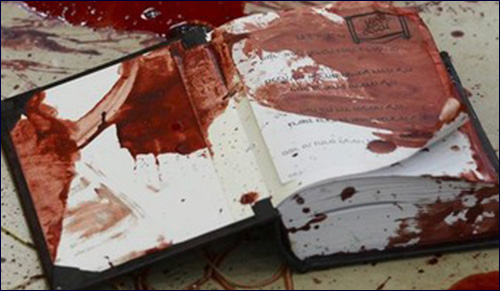 Iran’s Attack on Israel
Iran’s Attack on Israel


4 min read
3 min read
11 min read
4 min read
Har Nof is unremarkable on the outside, but extraordinary from the inside.
I live in Har Nof, a neighborhood on the western edge of Jerusalem, far from the usual hot spots. Har Nof itself is a little dull. It isn’t well-planned and brimming with promise like some of the newer Israeli towns. Nor does it have the character of the older Jerusalem neighborhoods. It isn’t quaint with cobblestone streets like bohemian Nachlaot, nor is it otherworldly and labyrinthine like Meah Shearim. It’s just a predominantly Orthodox neighborhood, about thirty years old, with dozens of clunky, limestone-faced apartment buildings and very little open space.
The only obvious beauty around here is the Jerusalem forest which borders the neighborhood. Even the people who live here fail to attract attention. So many of them are rabbis, scholars, teachers, and writers, many of them English-speaking immigrants from the U.S., Canada, Britain and South Africa.
Last week on Tuesday morning, two young Arab men armed with guns, knives, and an axe, entered Kehillat Bnei Torah, and whiles the Jews were praying, killed four of them (all rabbis) and wounded more. They literally hacked people to death. An eyewitness told me later that there was not a pool, but a river of blood, in the synagogue room that the terrorists had entered. One victim, Rabbi Aryeh Kupinsky, actually struggled against the murderers, sacrificing his own life in an effort to save the others in the room.
On the outside, the response in Har Nof has been understated. But if you had stepped into Kehillat Bnei Torah this Thursday afternoon, you would have seen and heard an outpouring of prayer that would have shaken you to your core. Hundreds of Har Nof residents were there, calling out to God with might and fervor. Special prayers were recited; the shofar was blown. The synagogue was roaring with a holy noise: six hundred worshippers beseeching Heaven for peace and security.
The Talmudic scholar with whom I study exemplifies this Har Nof attitude. I’ll call him Rabbi Ginsburg since he hates publicity. He was an eyewitness to the massacre.
A native of South Africa, Rabbi Ginsburg is tall and thin and soft-spoken. His idea of unadulterated pleasure is sitting in front of a volume of the Talmud or the Code of Jewish Law and losing himself in its intricacies. He wakes early each morning so that he can learn some Torah before he goes to morning prayers.
Last Tuesday morning, Rabbi Ginsburg’s alarm clock failed to ring on time and he arrived late at Kehillat Bnei Torah, the synagogue he normally attends. As he was about to enter the building, he heard gunshots, but a passerby told him that it was nothing. Without giving the matter much thought, Rabbi Ginsburg took the stairs into the building.
As he stepped into the central hallway, the doors to the synagogue burst open and out ran the two murderers. In that moment, Rabbi Ginsburg caught a glimpse of the carnage inside the room behind them – bloody bodies on the floor, wrapped in their prayer shawls. The two terrorists charged at him and as Rabbi Ginsburg turned to flee, he heard the terrorists fire at him.
Click-click-click was all he heard. The guns were empty of bullets. The 64-year-old rabbi fled from the building and ran home.
When I spoke to Rabbi Ginsburg later that afternoon, he told me about his horrific encounter and we made up to meet that evening to continue our studies. We met at Kehillat Bnei Torah.
We didn’t sit in the room where the massacre had taken place; that seemed inappropriate to us. Still, it took a great deal of courage for Rabbi Ginsburg to return so soon to the synagogue where he had seen the bloody bodies of his friends and colleagues. I knew that the rabbi was making a quiet statement that evening: “Nothing will deter me from serving the Creator.”
That evening we continued in our study of the Code of Jewish Law, examining the details of how to salt and soak meat in order to render it kosher. We both noted the irony of how many times we had to mention the word “blood” in our studies. But Rabbi Ginsburg barely missed a beat as we learned God’s Torah together. He even waxed enthusiastic at one point, as we succeeded in clarifying a knotty detail in Jewish law.
From an outsider’s perspective, our conversation might have seemed a little dull: two middle-aged, bearded men making a big deal about salting meat. But if you knew the context, you’d have seen the courage required for Rabbi Ginsburg to return resolutely and joyfully to his Torah studies. It was a Har Nof moment – really a Jewish moment – unremarkable on the outside, extraordinary from the inside.
